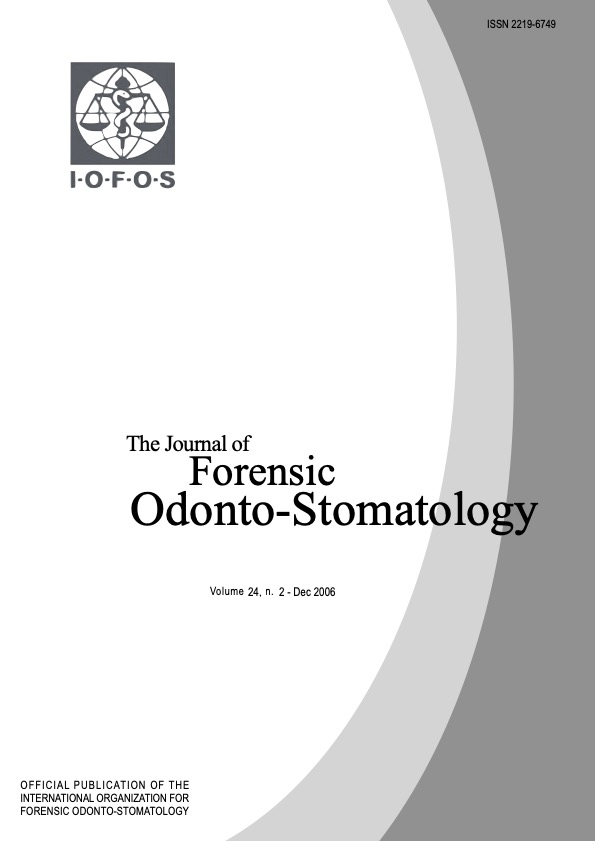Clinical and histopathological examination of experimental bite marks in-vivo
Abstract
Under rigorously controlled laboratory conditions, mechanically induced simulated human bite marks were made on pig skin to enable the clinical and histopatholgical study of experimental bite marks in-vivo.
A series of bite marks were created on the abdomen and thorax of live anaesthetized juvenile pigs at specific times just prior to and after death. Following the release of the biting force clinical observations of antemortem wounds revealed slow diminishment of the bite indentations presumably due to dermal elastic recovery. Minutes after euthanasia of the animals, the indentations of the teeth from the postmortem bite marks faded rapidly. After the biting process the animals were placed on either the right or left side and this side was maintained until necropsy to examine for dependant and non-dependent side differences. All bite mark injuries located on the non-dependent side revealed specific pattern characteristics. However, on the dependent side whether the bite mark was antemortem or postmortem in areas of livor mortis, no clear pattern was visible. Histologically, the observations for each bite mark specimen were categorised by the presence or absence of extravasated red blood cells in the fatty or muscle layers.
The histopathological findings correlate with the clinical observations of antemortem and postmortem bite marks located on the non-dependent side in regard to muscular erythema and extravasated red blood cells. It is clinically difficult to comment on temporal relationship of a bite mark in relation to time of death in areas affected by blood-pooling seen on the dependent side. In these situations, histopathological studies could be a reliable alternative to provide information regarding antemortem or postmortem injuries.

